This post may contain affiliate links. Please read our disclosure policy.
Israeli Salad is a vibrant and beloved Israeli chopped salad consisting of crunchy chopped cucumbers, bell peppers, onions, sweet and juicy tomatoes, and fresh herbs tossed in a light and delicious lemon olive oil dressing. Serve it from morning till night as a part of a meze platter or side dish for your main meals.

Authentic Israeli Salad Recipe
This traditional Israeli Salad, known as salat or salat katzuzt, meaning “salad” or “chopped salad” is a colorful and nutritious chopped salad bursting with crunchy diced cucumbers, bell peppers, onions, and juicy tomatoes. Dressed with fresh lemon juice and olive oil, it’s delicious by the spoonful or perfect alongside grilled fish, chicken kebabs, and lamb meatballs. It’s also fabulous as part of a meze alongside homemade falafel, hummus, pita, and other Middle Eastern finger foods.
This fresh salad can be assembled in just 30 minutes, and it’s best enjoyed immediately for the best texture and flavor. It’s definitely a new favorite, along with my Mediterranean salad, tomato salad, and tabouli salad recipe.
What is Israeli Salad?
Israeli salad is a traditional Middle Eastern salad. What most don’t realize is that it evolved from a Turkish salad called Shepherd’s salad, or “Coban Salatsi.”
During the mass Jewish immigration to Israel in the late 1800s, this Turkish salad became popular among the Jews and eventually adapted with some slight modifications, although much of it remained the same – including tomatoes, cucumbers, onions, peppers, parsley, lemon juice, salt, and olive oil. The veggies in this salad are traditionally diced to varying sizes depending on personal preferences. Some love a chunky texture while others prefer smaller diced veggies.
Today, this Israeli salad is considered a national dish and can be enjoyed as part of a meze (a selection of small dishes) or served alongside an array of Israeli main meals.
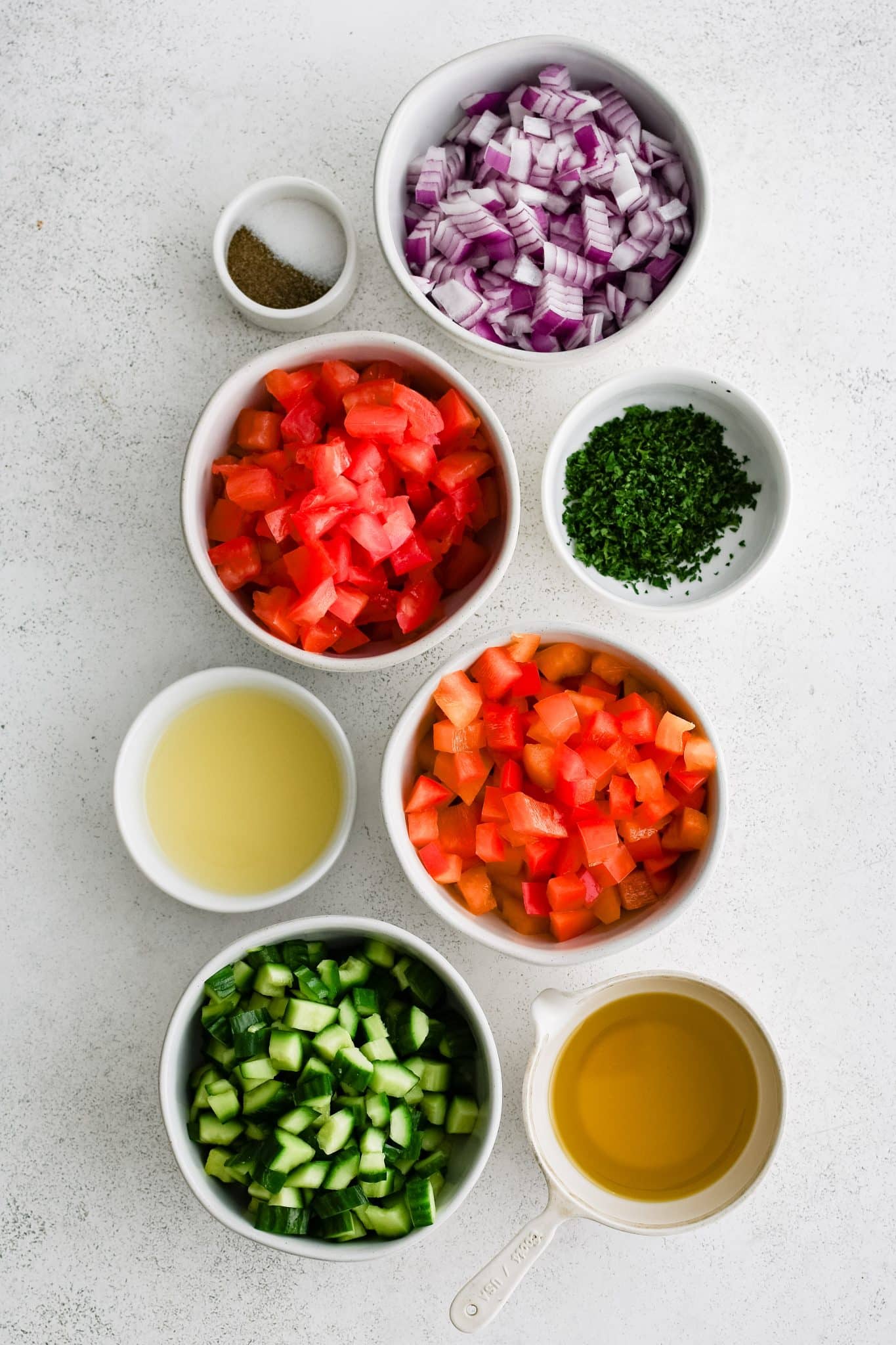
Key Ingredients
Find the printable recipe with measurements in the recipe card below.
- Olive oil – Use a quality brand of olive oil or extra-virgin olive oil for the dressing. At the very least, use an oil that you like the taste of.
- Lemon juice – Always use fresh lemon juice in this salad.
- Salt and Pepper – Standard seasoning for a simple salad. Add more or less salt and black pepper, to taste.
- Tomato – I’ve used slicer tomatoes for this salad, with the seeds removed and diced. You could also use grape tomatoes which won’t need to be seeded and offer a super sweet flavor.
- Cucumber – Baby Persian cucumbers work best in this Israeli salad. Again with the seeds removed and finely diced. I prefer to leave the skin on for the crunch, but you could peel your cucumbers if you like. English cucumbers can also be used.
- Red onion – Thinly sliced scallions (both the white and green parts) can be used instead.
- Red bell pepper – Green, yellow, orange bell peppers or a combination can also be used.
- Parsley – Freshly minced. Flat-leaf or curly parsley (or a mixture) can be used. Mint could also be added.
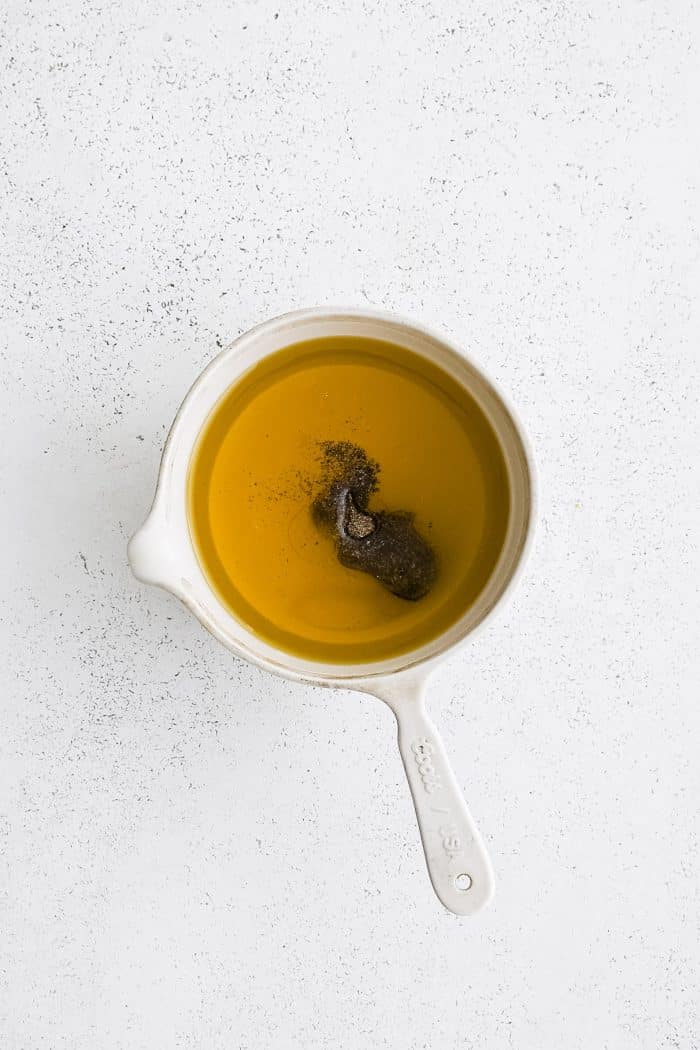
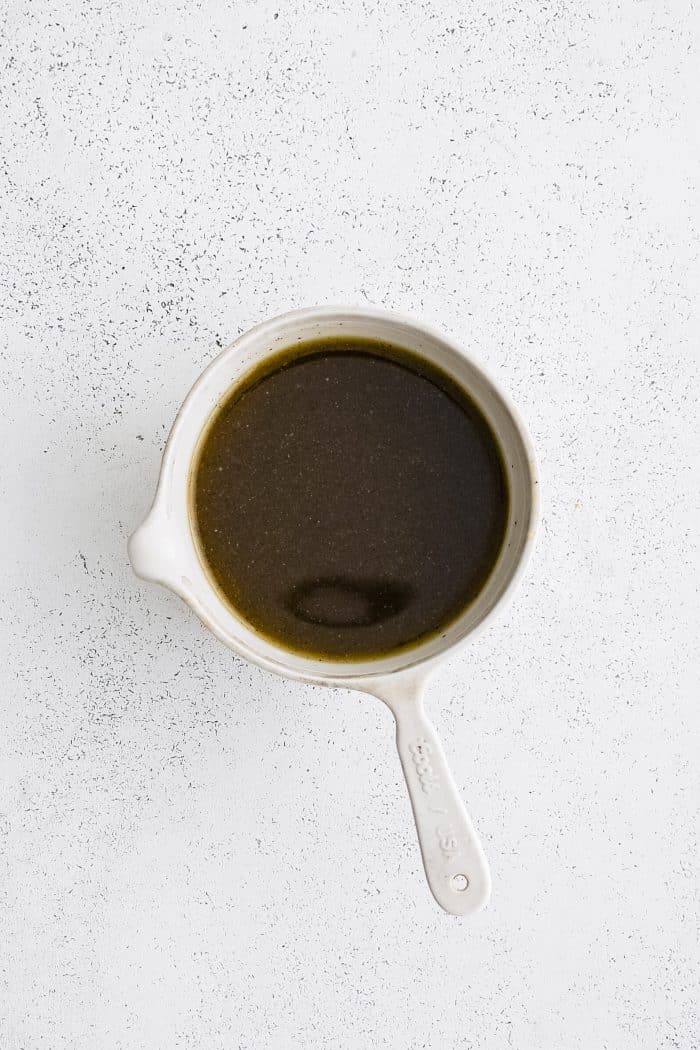
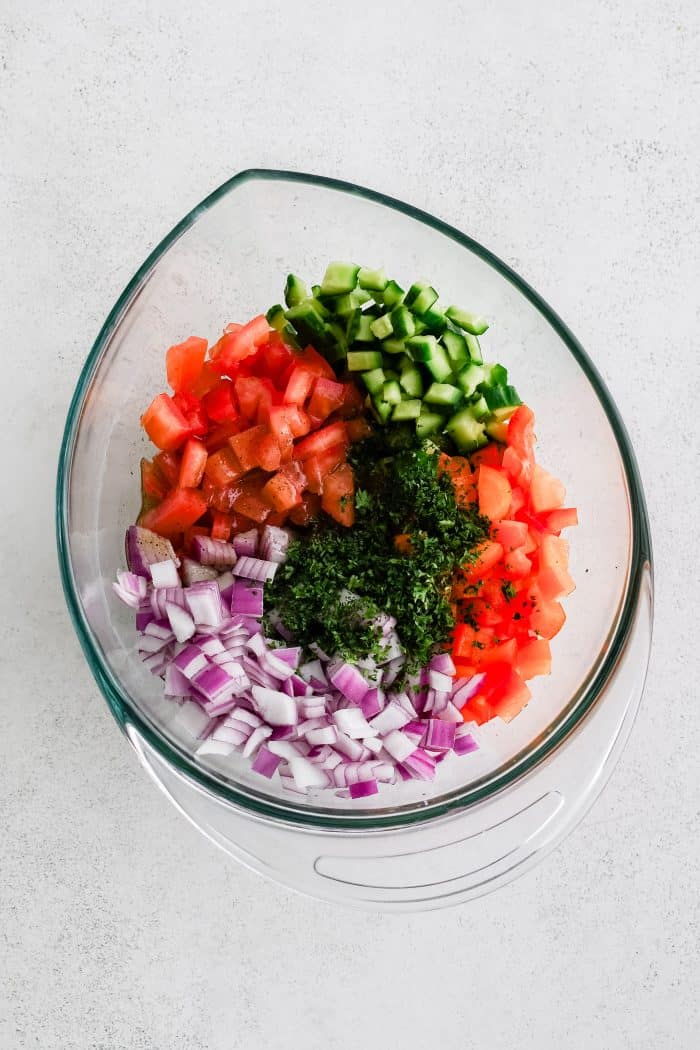
How to Make Israeli Salad
1. Make the dressing: Whisk together the oil, lemon juice, pepper, and salt. Set aside.
2. Combine the salad ingredients: Toss the rest of the salad ingredients together in a large bowl.
3. Add the dressing: Pour the dressing over the salad ingredients and toss to combine well. Allow the salad to sit for a short time to allow all of the flavors to infuse.
4. Serve: Serve the Israeli salad, topped with minced parsley and lemon wedges, if desired.
Recipe Tips
- Allow this salad to sit in the fridge for 15-20 minutes before serving to infuse the flavors. However, avoid letting it sit for longer than a couple of hours, as it will become quite watery.
- It’s really important to only use fresh ingredients for this salad, including lemon juice.
- Top this Israeli salad with soft diced feta cheese for a delicious creamy twist!
- Persian cucumbers are not waxy like most field-grown cucumbers, which have this coating added to retain moisture. As a result, there’s no need to peel the skin. However, if you use waxed cucumbers, I recommend peeling them.
- Easily double this recipe when catering to a larger crowd.
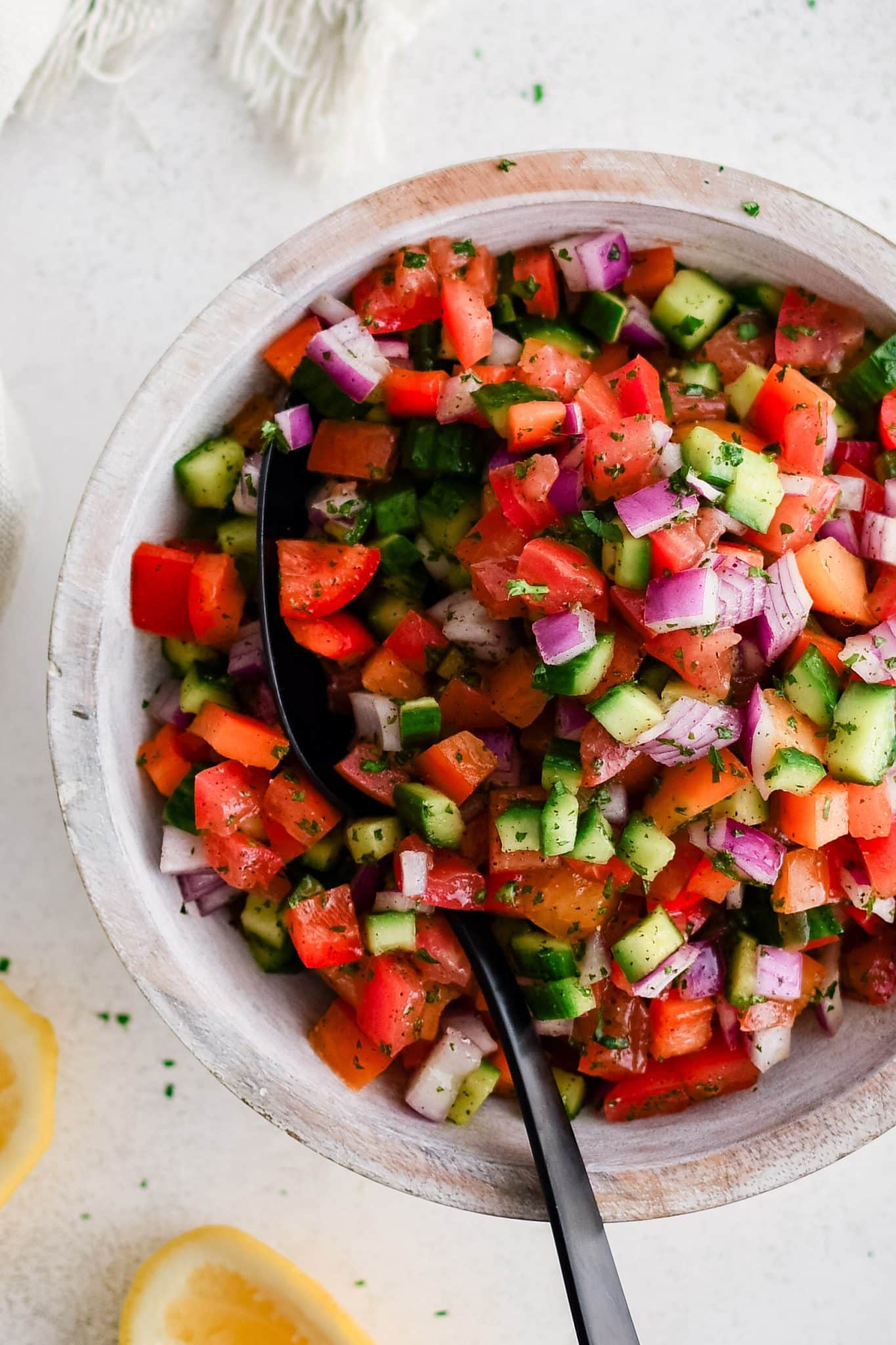
What is the Difference Between Israeli Salad and Shirazi Salad?
The ingredients in these two salads are so similar that their names are often used interchangeably, even though one is from Israel and the other from Iran. Apart from the difference in geographical origin, these two salads only differ with respect to the herbs used. While the Israeli salad calls for parsley, the Shirazi salad typically calls for mint.
What is Another Name For Israeli Salad?
This salad is commonly referred to in Israel as Salat or Salat Katzutz, meaning “salad” or “chopped salad” in Hebrew. It is also referred to as Arab salad in Arab countries, Salad Shirazi in Iran, and Shepherd’s salad or Çoban Salatası in Turkey and some parts of the Eastern Mediterranean.
How to Serve
In countries like Israel, this type of salad is typically served as part of a meze (a selection of small dishes), with other small sides and dishes like baba ghanoush, tzatziki, pita, dolma, homemade falafel, hummus, shish taouk, and Muhammara, to name a few.
It’s the perfect small dish to serve as part of a multi-course meal, leading up to the main, such as Shakshuka, lamb chops, Greek chicken, grilled veggie skewers, and chicken kebabs. It can also be served as a small snack with Laffa bread (a type of pita bread) or crackers.
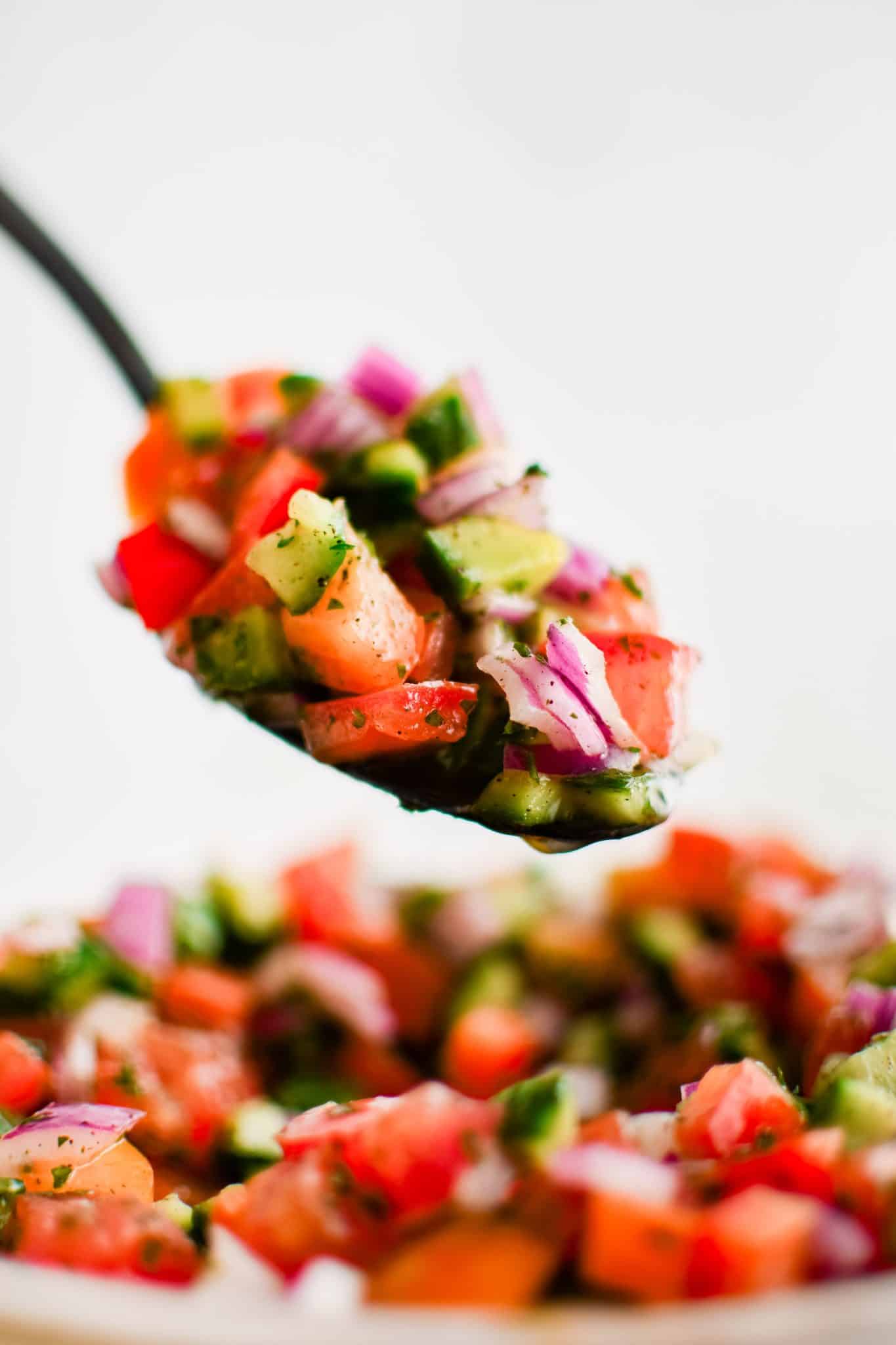
Storage
Leftover Israeli salad is intended to be served immediately after assembling. If you need to store this salad, only do so for a maximum of 4 hours in the fridge, covering the salad with plastic wrap or transferring the salad to an airtight container. Remember that this juicy salad’s fresh ingredients will release more liquid as they sit.
Freezing is not recommended.
More Fresh Salad Recipes
- Caprese Salad Recipe (Insalata Caprese)
- Balsamic Tomato Basil Salad
- Green Goddess Salad
- Cucumber Salad Recipe
- Easy Tomato Salad Recipe with Homemade Vinaigrette
- Spinach Pear and Feta Salad Recipe
If you make this Israeli Salad Recipe, please leave me a comment below! I always love to read your thoughts and feedback!
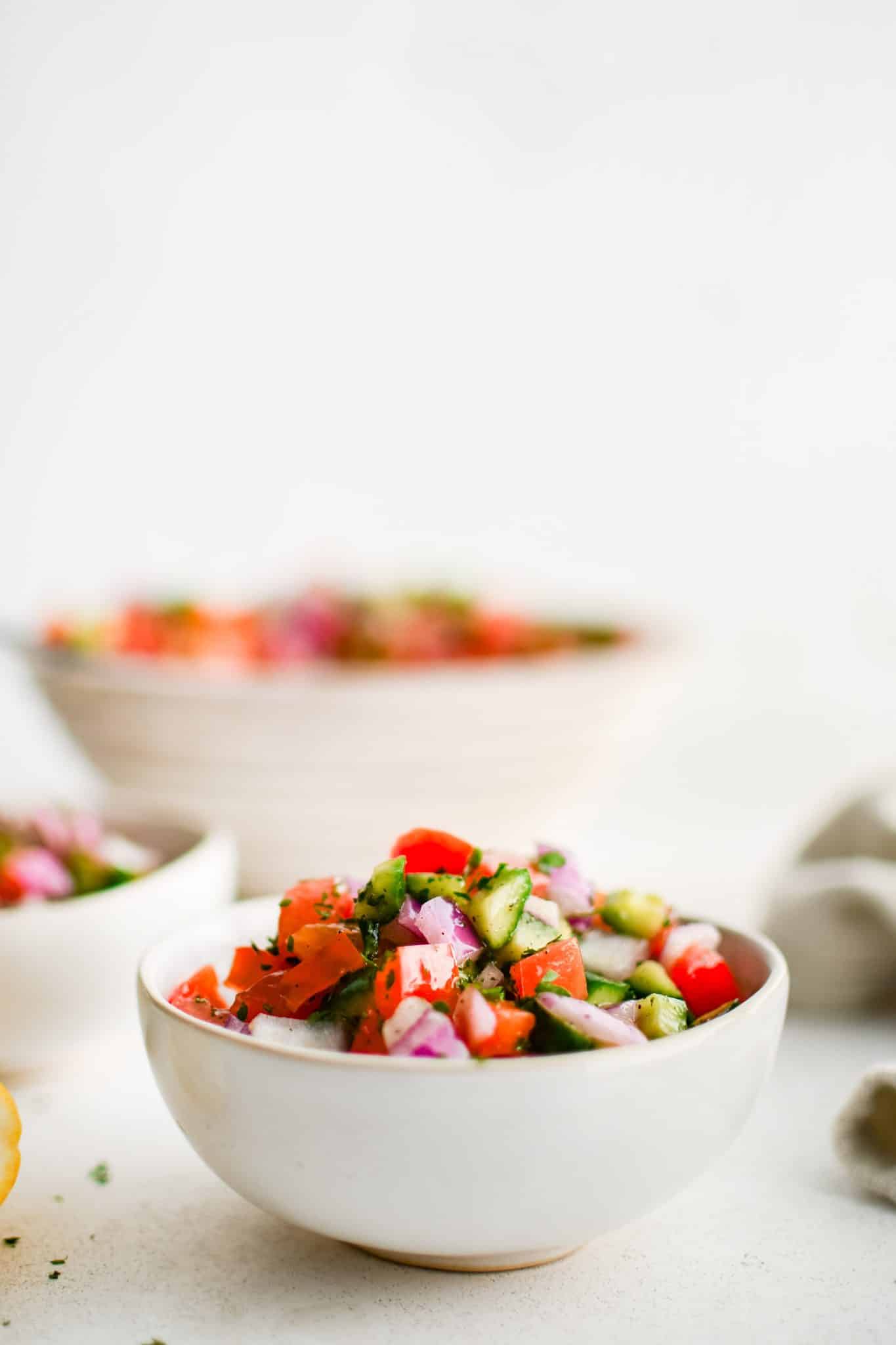

Israeli Salad Recipe
Ingredients
- ¼ cup extra virgin olive oil
- 2 tablespoon fresh lemon juice
- ½ teaspoon pepper
- ½ teaspoon salt
- 2 slicer tomatoes, deseeded and diced
- 2 Persian cucumbers, deseeded and diced
- 1 small red onion, diced
- 1 red bell pepper, deseeded and diced
- 2 tablespoon fresh parsley, minced
Instructions
- Whisk the oil, lemon juice, pepper, and salt together in a medium bowl and set aside.
- Toss the tomato, cucumber, onion, bell pepper, and parsley together in a large bowl then pour in the dressing.
- Toss again to combine then serve with extra minced parsley and lemon wedges if desired.
Notes
- This salad tastes best when served immediately. Leftovers can be stored in an airtight container in the fridge for up to 4 hours. (It will release more liquid the longer it sits.)
- Vegan and gluten-free.
Nutrition
Nutrition information is automatically calculated, so should only be used as an approximation.















It was very good, but I think it needed a bit of garlic flavor.